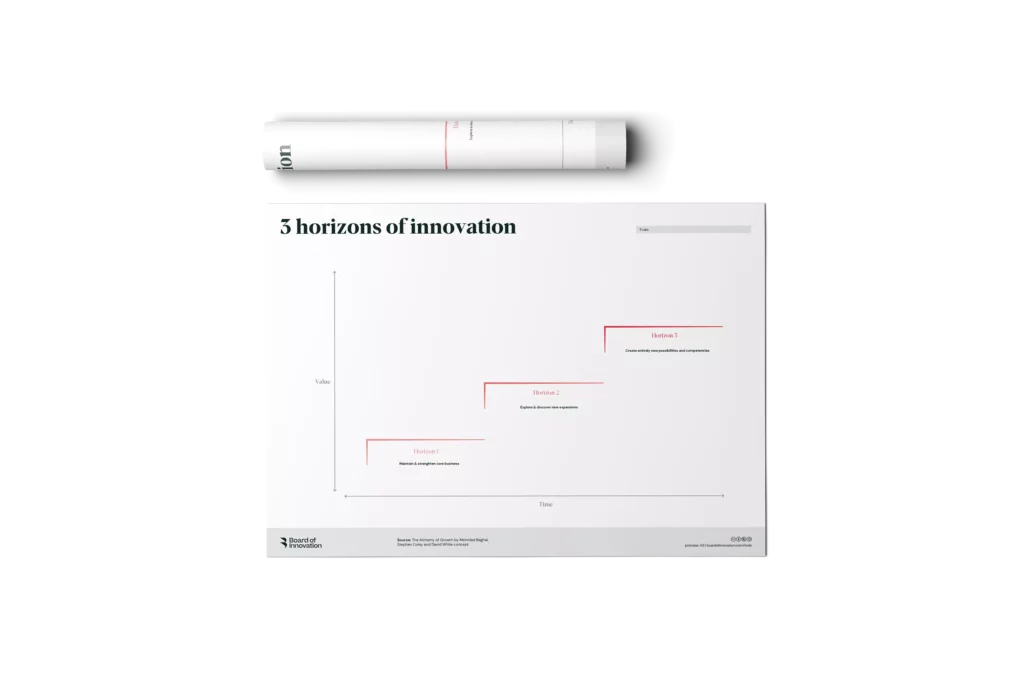
The 3 horizons model is a growth strategy framework by McKinsey that you can use to think about the future of your company. It can help you manage growth in a coordinated way.
People often get it confused with an innovation strategy framework, but that’s incorrect. The 3 horizons model should only be used to set or challenge a growth strategy, which will help inform an innovation strategy. The innovation strategy, in turn, can help shape or challenge the growth strategy.
You’ll notice that the model has an axis of TIME and an axis of VALUE (sometimes labelled profit). The 3 horizons are simply three S-curves that occur one after the other, representing each innovation project.
Horizon 1: 1-3 years
Horizon 2: 2-5 years
Horizon 3: 5-12 years
The horizon model creates 3 future “waves” of innovation:
Horizon 1 innovations are generally short-term projects that generate results in 1-3 years. Of course, the timing varies. For instance, a tech, direct-to-consumer business might move faster and see results from their horizon 1 innovations within 6 months. But generally, you’ll be able to see results within 1-3 years.
Horizon 2 innovations take a bit longer because they’re typically those that have been copied from adjacent markets and applied to a new context (which means they still go over well in quarterly reviews). These innovations might involve adapting technology, processes, or revenue stream structures that already function well in other industries to your own.
Horizon 3 ventures are long-term innovation projects that generally produce results in 5-12 years. This typically is associated with non-incremental innovation (disruptive, radical, or architectural innovations, for instance). But in reality, we all know incremental changes in certain heavy B2B industries might only hit the market many years later, and thus show results in 5-12 years (think of the compounded effect theory of continuous incremental innovation).
Download this PDF and print it on an A3 or A2 sheet of paper. You can also draw the diagram on a sheet of paper if you can’t print. Best to use post-its to move ideas around as the discussion evolves.
Have your fresh new corporate strategy at hand to refer to. Consider must-wins, business impact expectations, and timing around innovation outcomes in particular.
Have a critical discussion about what the business is intending to achieve and by when with regarding to projects that could maintain or strengthen the existing core business as Horizon 1.
Discuss the types of projects that will be considered emerging or expanding business opportunities. Will your idea generate substantial profits in the near future? Do you need a serious investment to make it happen? Plot your project types under the Horizon 2 curve accordingly.
Do you wish to pursue long term return on innovation (ROI) or profitable growth down the road? E.g. small ventures such as research projects, pilot programs, core R&D activities or minority stakes in new businesses and markets? Map your strategic intent under the Horizon 3 curve on post-its.
